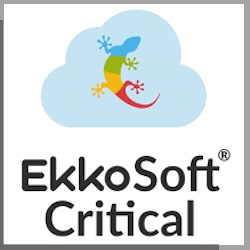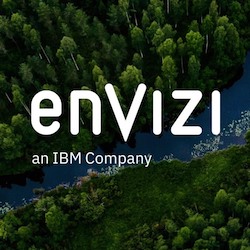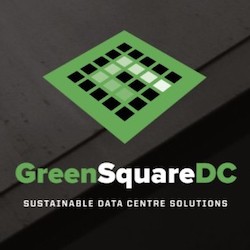Just a day after HCLTech Trends and Insights highlighted how the world is not on track to meet the Paris Agreement and why COP28 should deliver a clear path forward, World Economic Forum said that an additional $13.5 trillion investment is required to fast-track decarbonization of some key industries.
WEF’s second edition Net-Zero Industry Tracker 2023 highlights net-zero emissions of the eight industries that emit 40% of global greenhouse gas (GHG), posing some of the most technological and capital-intensive decarbonization challenges.
To add to the challenge, these industries — steel, cement, aluminum, ammonia (excluding other chemicals), oil and gas, aviation, shipping and trucking — depend on fossil fuels for 90% of their energy demand.
As world leaders gather on the threshold of COP28 in the UAE to create a joint roadmap on best practices to reduce emissions, the United Nations called for “dramatic climate action” to close an “emissions canyon” — in a bid to meet the net-zero goals by 2050.
Sustainability as a business priority
According to the report, these eight industries need to prioritize sustainable initiatives in five areas — technology, infrastructure, demand, policy and capital — to survive and thrive moving forward.
Here, investments in clean power, clean hydrogen and infrastructure for carbon capture, utilization and storage (CCUS) will be needed to accelerate industrial decarbonization across most sectors. The report added that the $13.5 trillion in investments is derived from average clean power generation costs of solar, off-shore and on-shore wind, nuclear and geothermal, electrolyzer costs for clean hydrogen and carbon transport, as well as storage costs.
This calls for a comprehensive framework of emissions drivers and enablers to measure progress and identify gaps, scorecards for each industry and opportunities for cross-sector collaboration.
“Decarbonizing these industrial and transport sectors is essential to achieving net zero, especially as demand for industrial products and transport services will continue to be strong,” said Roberto Bocca, Head of Centre for Energy and Materials, WEF. “Significant infrastructure investments are required, complemented by policies and stronger incentives so industries can switch to low-emission technologies while ensuring access to affordable and reliable resources critical for economic growth.”
Steps against greenwashing
For example, a lot of organizations are indulging in greenwashing and presenting themselves as environmentally responsible. To reduce the false claims, the UK Digital Markets, Competition and Consumer Bill, for example, is likely to empower regulators against companies that make misleading environmental claims. Fines will range up to 10% of global turnover for breaching consumer law.
Even the Advertising Standards Authority (ASA) have started cracking down on greenwashing in advertising, recently issuing reprimands to leading organizations.
Some countries have introduced regulations to tackle greenwashing since UN Secretary-General António Guterres’ “zero tolerance for net-zero greenwashing” comment at COP27.
However, Santhosh Jayaram, Global Head of Sustainability at HCLTech, said: “The problem continues to persist due to the absence of clear definitions on terminologies and liable accountabilities on claims. Until this is addressed, different shades of green will exist.”
The report’s findings underscore the urgency for creating a robust enabling environment, including low-emissions technologies, infrastructure, demand for green products, policies and investments. In addition to increasing capital expenditures to decarbonize existing industrial and transport asset bases, further investment is needed to build a clean-energy infrastructure.
“It is imperative that action is taken soon to both decarbonize and improve energy efficiency; otherwise, unabated fossil-fuel demand in the key industry sectors, which have grown 8% on average the past three years, will increase very significantly by 2050,” added Bocca.
According to the report, carbon pricing, tax subsidies, public procurement and development of strong business cases can support mobilizing the necessary investments. However, raising capital for high-risk projects with unproven technologies could be challenging in the current macroeconomic environment.
Institutional investors and multilateral banks, therefore, can play an important role by providing access to low-cost capital linked to emissions targets; equally vital is adapting financial models to the needs of various industries and regions.
While there are economic perks attached to migrating to the green side, sustainability is undeniably now a business priority and will be viewed as benchmark for successful businesses. Today, there are tools, technologies, methodologies and evolving economies that can help an organization enable sustainable initiatives.
Three options for a sustainable future
Let's take a closer look at three opportunities involving (1) FinOps, (2) Circular Economy and (3) Green Blockchain.
1. FinOps: A crucial ally for organizations who want transparent insights into where money is being spent and its outcome, FinOps is the future of IT cost management for modern businesses. It enables organizations to get maximum business value by helping sustainable engineering, finance, green technology, procurement and business teams collaborate on data-driven spending decisions.
Meant to inform, optimize and operate, today’s FinOps tools have integrated the cloud carbon footprint services to democratize sustainability reporting, and are developing algorithms to provide better visualization, optimize efficiency and reduce carbon emissions.
With most of the reported carbon emissions falling in scope 3 category, the concepts and framework of FinOps aim at reducing them for organizations, thereby creating a governance model for sustainable operations in the cloud. The cloud decarbonization mechanisms measure GHG emissions through the carbon footprint tools. They create energy-efficient architectures that are modern and upgradable and use language models and codes to build energy-efficient apps. Based on power usage effectiveness, they choose cleaner cloud regions and schedule start/stop to reduce power consumption and track waste and unattended resources.
HCLTech is a leading global tech company among the GSI (global system integrator) community that has already been accredited as FinOps Certified Service Provider and FinOps Certified Platform by the FinOps Foundation.
2. Circular economy: From helping build a cleantech economy with sustainable engineering to highlighting the menaces created by greenwashing, next-gen technologies have been essential in emphasizing the differences between the present linear economy and how to develop a circular economy (CE).
It’s evident that advancements in green technologies are vital components of a CE required for a sustainable future. Technologies like artificial intelligence, big data and analytics and blockchain are supporting sustainable initiatives, and also saving time and money. They are designed to minimize the negative impact of human activity on the planet.
Additionally, the right technology partner like HCLTech can help in transitioning to a CE and carbon-free economy with Internet of Things, Extended Reality and Cloud, easing traditional ways and bringing in transparency in various supply chains.
3. Green blockchain: Moving a step forward from transforming the oil and gas industry by bringing in transparency and security, green blockchain is the next-gen technology that is committed to carbon-negativity and does not contribute to climate change through GHG emissions due to its consensus mechanism.
Blockchains’ consensus mechanism is a program used to achieve a state of a decision or distributed agreement on which all network participants agree to the ledger's state. It refers to all incentives, protocols and ideas that allow a network of nodes to agree on the state of a blockchain. A consensus mechanism has 10 types, including Proof-of-Work (PoW) and Proof-of-Stake (PoS).
Researchers at University College of London (UCL) Centre for Blockchain Technologies confirmed in a study that green blockchains’ PoS mechanism — used by Ethereum — is environment-friendly and consumes far less energy than Bitcoin’s PoW.
Author Jaydeep Saha is a global reporter at HCLTech. More: Read more HCLTech guest blogs here.




